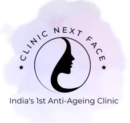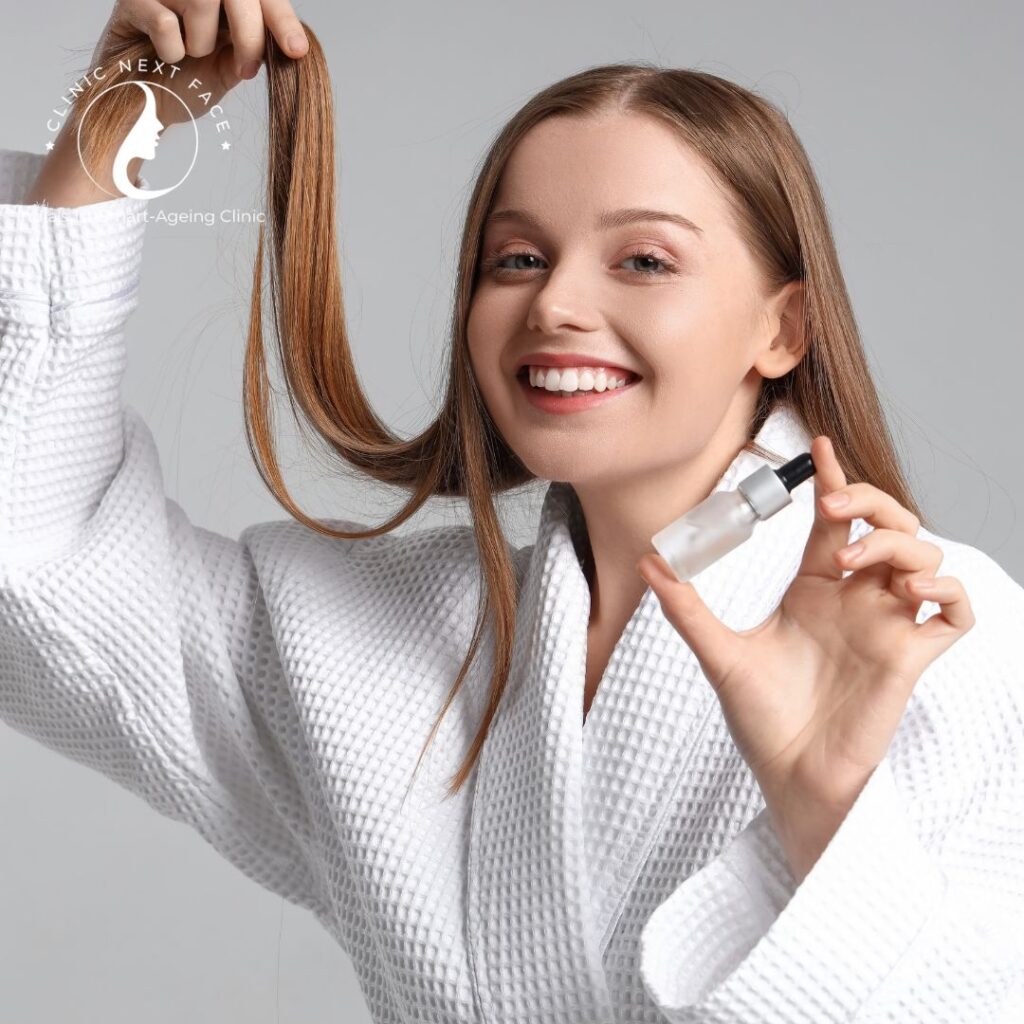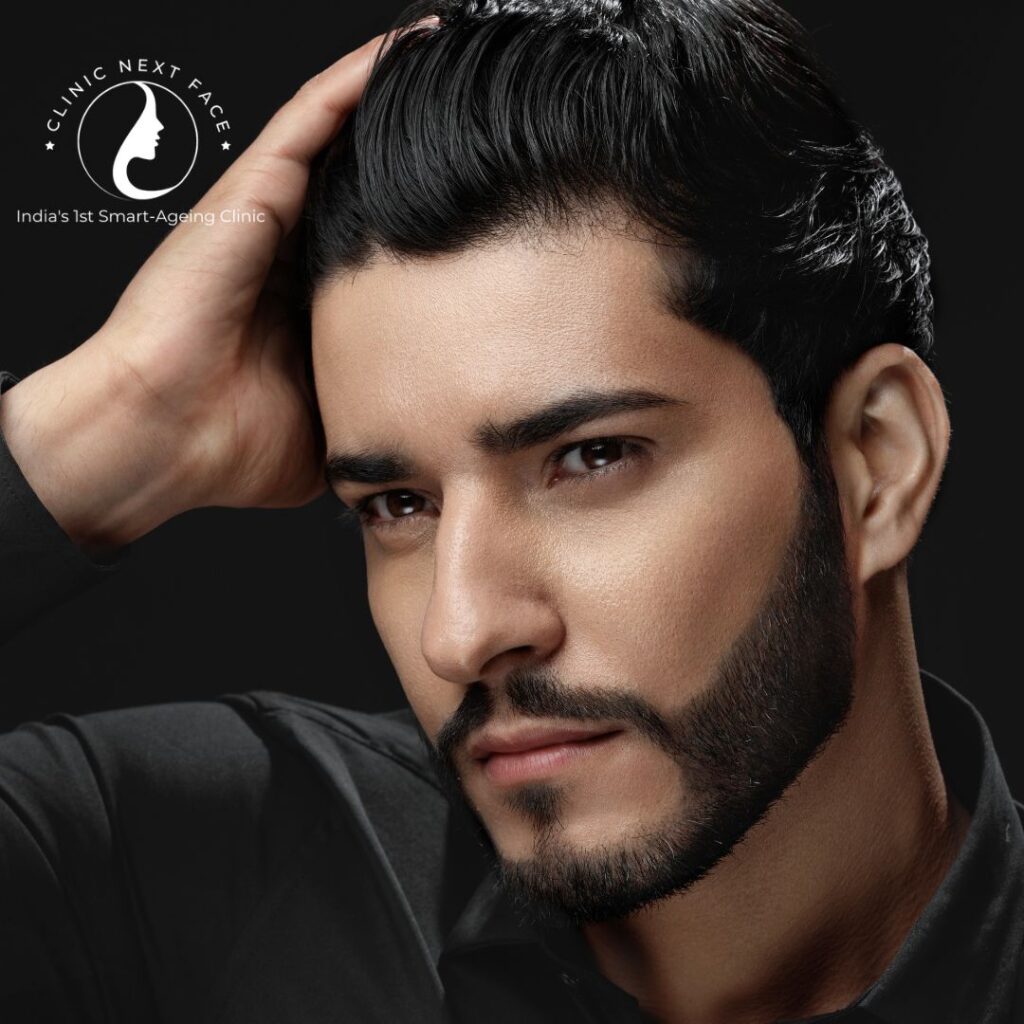Table of Contents
TogglePRF Hair Treatment In Bangalore
Sessions
5 - 6
Duration
1 hours
Frequency
Every 1 month
Results
From 4th Month
Numbing Cream
Not required
Social downtime
None
Time off work
None
Sport
Immediately
Sessions
5 - 6
Duration
1 hours
Frequency
Every 1 month
Sport
Immediately
Results
From 4th Month
Numbing cream
Not required
Social downtime
None
Time off work
None
Platelet-Rich Fibrin (PRF) or Foliboost is a pure autologous biomaterial that can heal your wound quickly, regenerate tissue, increase osteogenesis stimulation and form new blood vessels. As PRF can contain almost 10 times more platelet concentration than normal blood, it has excellent regenerative and healing properties.
Clinic Next Face offers high-quality treatment for your hair. If you want to opt for this treatment, our experts can help.
What is PRF Hair Treatment?
PRF treatment is a hair improvement and rejuvenation treatment that uses the potential of blood cells to increase collagen. You can go for this treatment for your hair, hands, neck, and face to enhance your thin and crepey skin. Our experts apply this treatment after skin needling therapy.
PRF injections are a safe option to get youthful skin and regrow your hair. If you are suffering from massive hair loss and aging skin, PRF treatment can do wonders!
How Does PRF Treatment Work?
PRRF, or platelet-rich fibrin, is a treatment that involves injecting a concentration of platelets and fibrin into the scalp to promote hair growth. PRF is believed to stimulate the growth of new hair follicles and improve the overall health and thickness of the hair.
Some potential benefits of PRF treatment for hair include:
Stimulating hair growth: PRF contains a high concentration of growth factors that may stimulate the growth of new hair follicles and improve the overall thickness and density of the hair.
Improving hair quality: PRF may help to improve the health and quality of the hair by providing nutrients and growth factors that support healthy hair growth.
Non-surgical treatment: PRF is a non-surgical treatment option for hair loss, making it an appealing choice for those who want to avoid the risks and downtime associated with surgery.
Natural results: PRF is derived from the patient’s own blood, so the treatment is considered to be a natural and holistic approach to hair restoration.
It is important to note that PRF treatment is relatively new and more research is needed to fully understand its effectiveness in promoting hair growth. It is always important to consult with a healthcare professional before starting any new treatment for hair loss.

Conditions treated
Androgenetic Alopecia (Male and Female Pattern Baldness)
Alopecia Areata
Thinning Hair
Hair Loss Due to Stress or Hormonal Changes
Post-Surgical or Post-Chemotherapy Hair Loss
What Makes PRF Different from PRP?
Both PRF and PRP require experts to take blood from patients. PRF needs less blood to be taken than PRP. PRF usually has more healing factors than PRP. Plus, the lower spin creates less trauma to your blood’s cells which helps more stem cells to stay in the final PRF product.
A distinguishing difference between PRF and PRP is the concentration of platelets in the final product. The perfect concentration of platelets for a PRP sample ranges from 2 to 5 times the level of platelets usually found in your body. An even higher concentration of platelets can be more effective in tissue damage treatment. PRF products contain around 10 times the platelet concentration found in a body.
PRF involves no use of anticoagulants during blood processing. With PRP, the collected blood is positioned in test tubes, which have an anticoagulant known as Acid Citrate Dextrose (ACD) that quickly prevents the blood elements from clotting. The PRF test tubes don’t have any anticoagulant to keep platelet products natural.
In short, it makes it 60% more effective than traditional PRP.
The specific growth factors and signaling proteins present in PRF and their role in promoting hair growth and improving hair quality
Platelet-rich fibrin (PRF) is a biomaterial that is derived from the patient’s own blood and contains a high concentration of platelets, fibrin, and growth factors. The specific growth factors and signaling proteins present in PRF can vary depending on the preparation method used and the specific type of PRF product. However, some common growth factors and signaling proteins that may be present in PRF include:
Platelet-derived growth factor (PDGF): This growth factor is involved in the repair and regeneration of tissues, including hair follicles. It promotes the proliferation and differentiation of cells, which can help to stimulate the growth of new hair follicles.
Vascular endothelial growth factor (VEGF): This growth factor promotes angiogenesis, or the growth of new blood vessels. It is thought to be important in the development of new hair follicles and in the maintenance of healthy hair growth.
Epidermal growth factor (EGF): This growth factor promotes the proliferation and differentiation of cells, including those in the hair follicles. It is involved in the repair and regeneration of tissues, and may help to stimulate the growth of new hair follicles.
Transforming growth factor-beta (TGF-β): This growth factor is involved in the regulation of cell proliferation, differentiation, and apoptosis. It has been shown to have a role in the growth and maintenance of hair follicles, and may be involved in the stimulation of new hair growth.
Fibroblast growth factor (FGF): This growth factor is involved in the proliferation, differentiation, and survival of cells, including those in the hair follicles. It may help to stimulate the growth of new hair follicles and improve the overall quality and thickness of the hair.
It is important to note that the specific growth factors and signaling proteins present in PRF and their individual roles in promoting hair growth and improving hair quality are still being studied and are not fully understood.
PRF Vs. QR678
PRF hair restoration therapy involves the injection of concentrated plasma into your scalp. PRF uses your body’s stem cells to produce more collagen, regenerate tissues and regrow hair.
As PRF growth factors are derived from your blood, your body can more easily adopt the treatment and regenerate more natural tissues. The growth in tissues stimulates hair follicles and makes them healthier and larger, so they produce thicker hair. Both men and women should consider PRF treatment if they are suffering from thinning hair, baldness, and a receding hairline. You may require up to 4 sessions to get the best results. A maintenance session every six months to one year after the initial series of treatment sessions can do wonders. PRF treatment is safe and works better for young people, mainly below 40 years old.
The QR678 therapy controls hair fall and increases the number, density, and thickness of your hair follicles, which reduces hair loss. The polypeptides in the formulation are in our scalp, which makes QR678 a natural growth-factor-based treatment.
As polypeptides penetrate deeply inside and add nourishment to your scalp, they grow hair. QR678 is FDA-approved as a minimally invasive hair regrowth therapy. Unlike PRF treatment, QR678 treatment promotes the holistic growth of hair follicles and their health. It has no side effects, delivers long-term results, and is perfect to be implemented for hair loss due to chemotherapy.
This treatment, combined with other medicinal treatments, can treat the root cause of your hair loss and regrow hair to deliver natural-looking outcomes.
Benefits of PRF treatment for Hair
Here are the key benefits of PRP treatment for hair:
Non-surgical treatment
Painless
Comfortable
Hair fall control
Boost overall hair quality
No harmful side effects
No downtime
Talk To Our Hair Loss Expert Today!
No Obligations! Just jump on a quick call with our hair loss expert and know what kind of treatment will suit you the best.
Either way you will get some actionable tips to reach your hair goals faster.
Frequently Asked Questions On PRF
Platelet-rich fibrin (PRF) treatment is a non-surgical treatment option for hair loss that involves injecting a concentration of platelets and fibrin, two components of the blood, into the scalp to promote hair growth and improve the overall health and thickness of the hair.
PRF is believed to stimulate the growth of new hair follicles and improve the overall health and thickness of the hair. However, the effectiveness of PRF treatment for hair loss is still being studied and is not fully understood. Some studies have suggested that PRF treatment may be effective in promoting hair growth and improving hair quality, while others have shown mixed or inconclusive results.
It is important to note that the results of PRF treatment for hair loss can vary among individuals, and it may not be effective for everyone. Factors that may influence the effectiveness of PRF treatment for hair loss include the severity and type of hair loss, the age of the patient, and the presence of any underlying health conditions.
The duration of the effects of platelet-rich fibrin (PRF) treatment for hair loss may vary among individuals. Some studies have suggested that the effects of PRF treatment may last for several months, while others have reported that the effects may last for up to a year or longer.
It is important to note that the duration of the effects of PRF treatment for hair loss may be influenced by a number of factors, including the severity and type of hair loss, the age of the patient, and the presence of any underlying health conditions.
PRF treatment is generally considered to be a temporary solution for hair loss, and follow-up treatments may be necessary to maintain the benefits of the treatment. The frequency of follow-up treatments may vary depending on the individual and the specific needs of the patient.
It is always important to consult with a qualified healthcare professional before starting any new treatment for hair loss. They can help you to determine the most appropriate treatment option for your specific needs and help you to manage your expectations for the treatment outcome.











